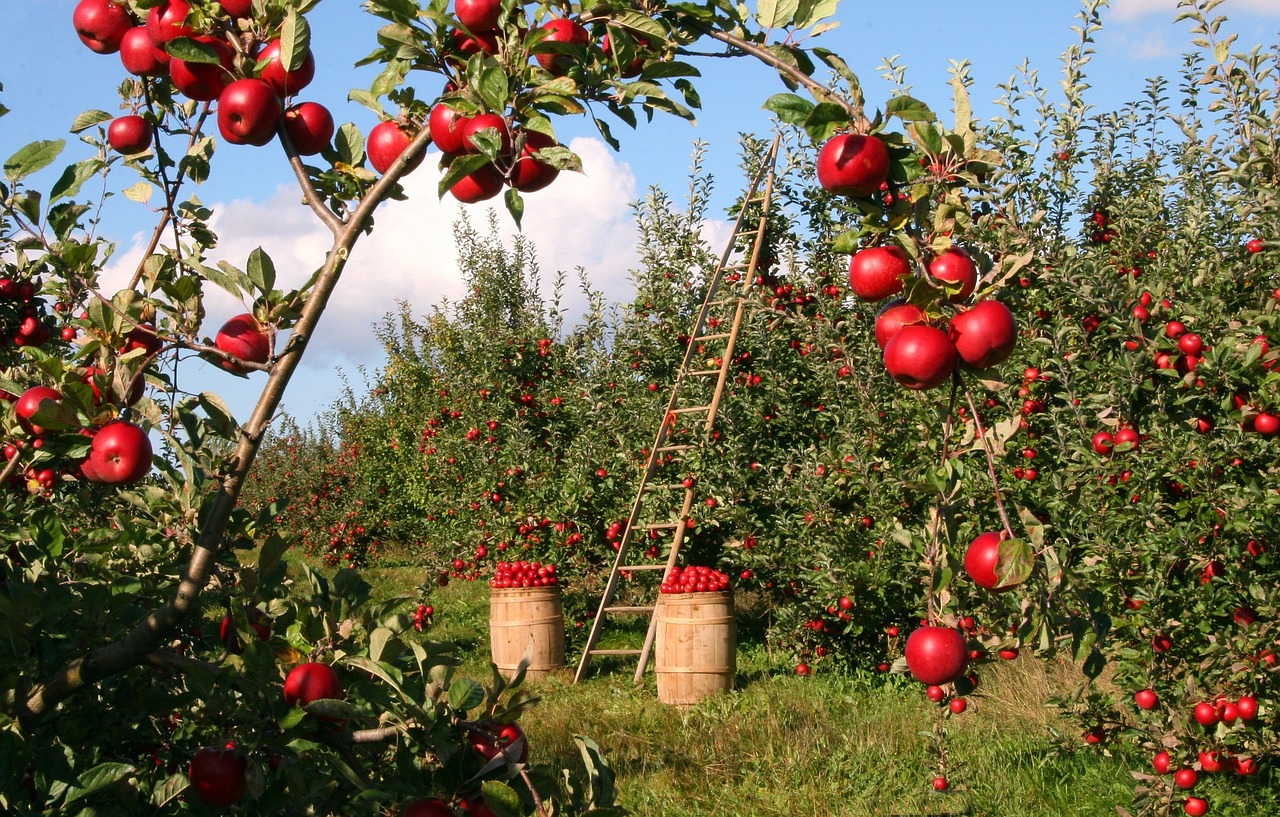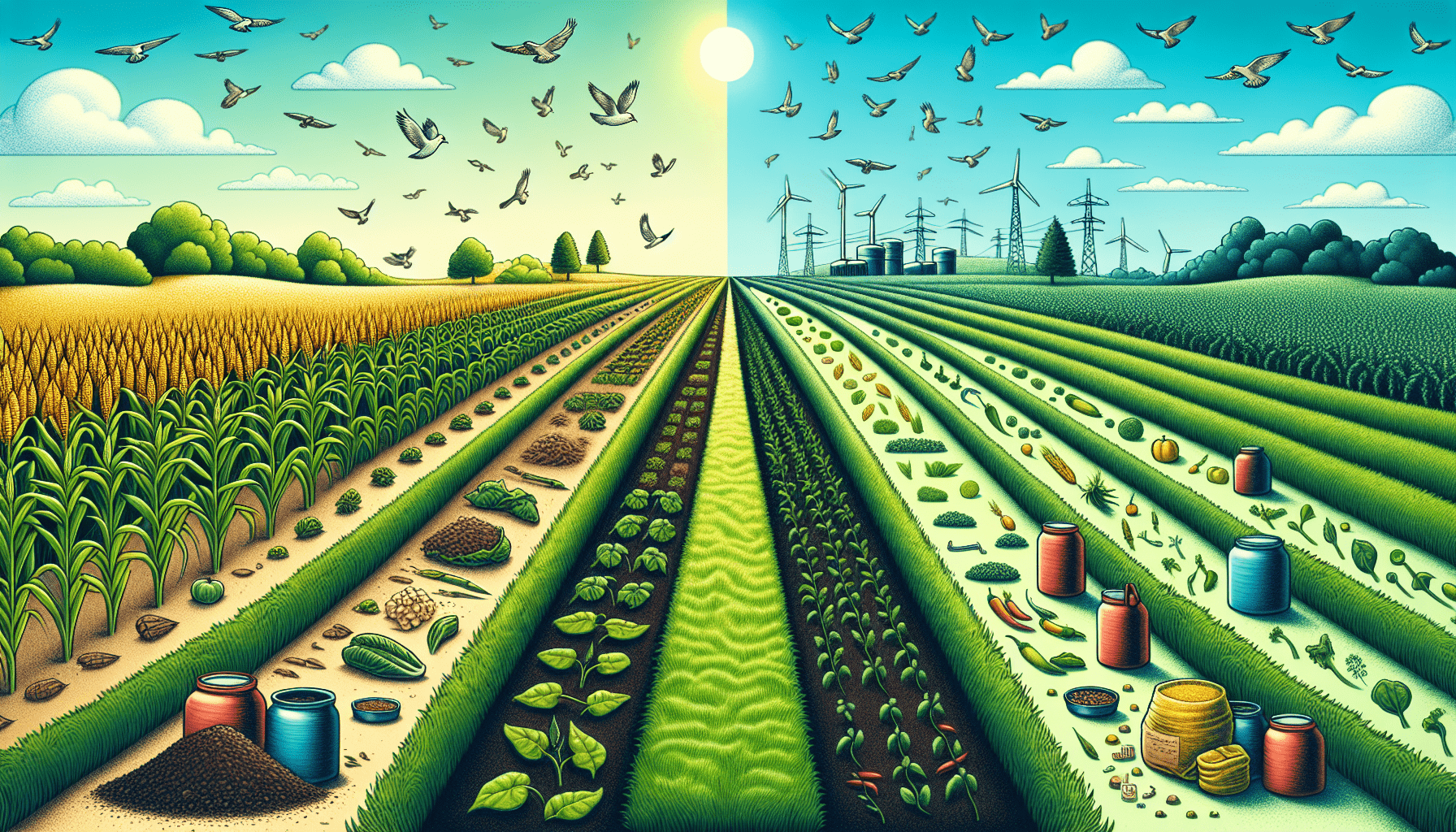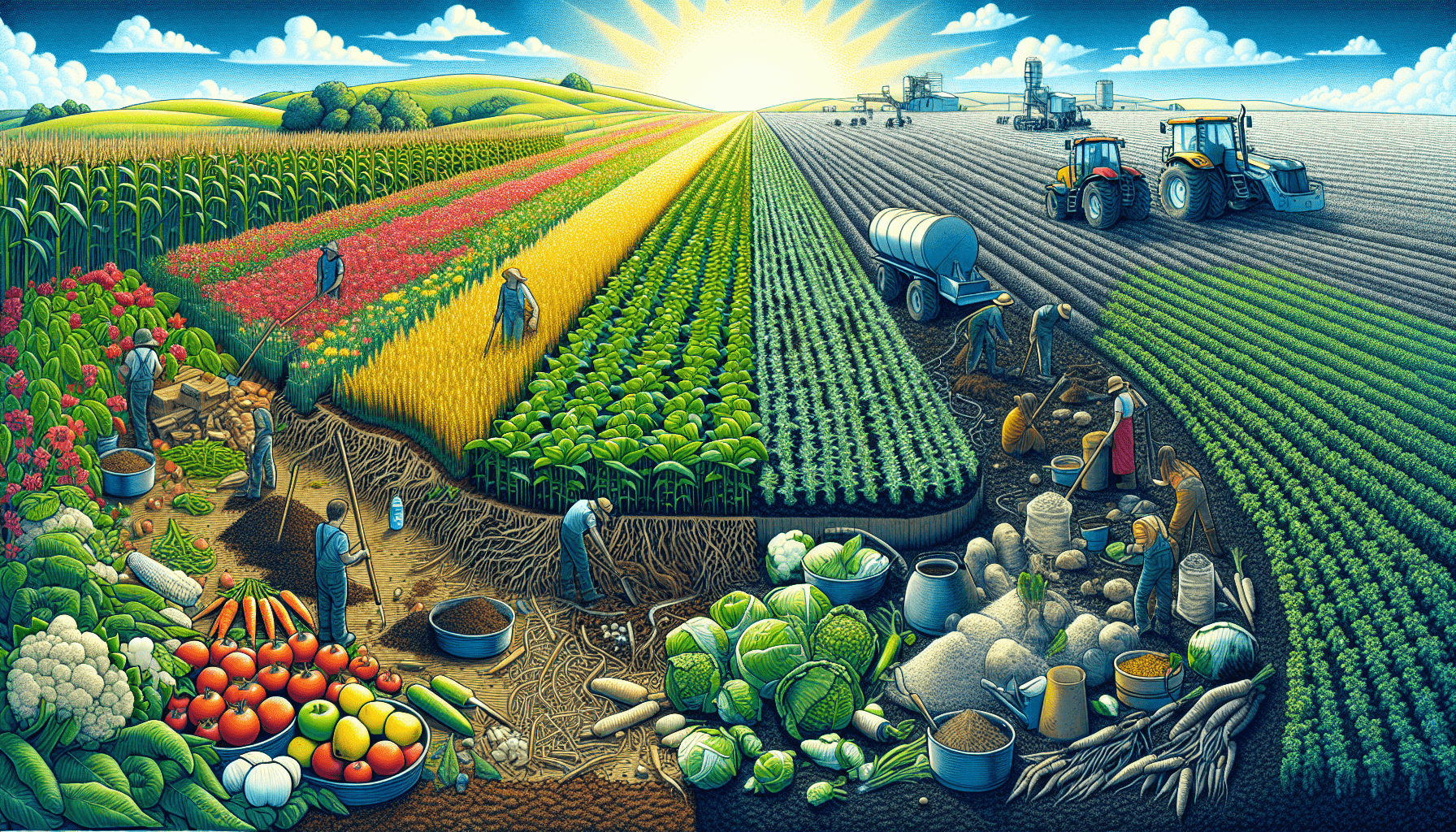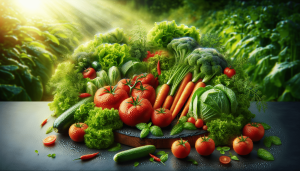Welcome to “Understanding the Differences: Organic Farming vs. Conventional Farming”! In this article, we explore the fundamental distinctions between organic and conventional farming practices. Together, we’ll journey through the various techniques, benefits, and potential drawbacks of each method, highlighting how they impact our health, the environment, and the food we eat.
As we delve into the world of agriculture, it’s crucial to recognize that organic farming relies on natural processes and materials to cultivate crops, avoiding synthetic chemicals and genetically modified organisms. In contrast, conventional farming often incorporates synthetic pesticides, fertilizers, and genetically modified seeds to boost yields and efficiency. By understanding these differences, we can make more informed choices about the food we consume and support farming practices that align with our values. How does organic farming differ from conventional farming? This question often sparks lively discussions among farmers, environmentalists, and food consumers alike. In recent years, the debate between organic and conventional farming has grown more intense. Here, we will break down the key differences, offering an in-depth look into both farming methods to help us all better understand their distinct characteristics and impacts.
What is Organic Farming?
Organic farming is an agricultural method that focuses on growing crops and raising livestock in ways that preserve the environment, improve soil health, and avoid synthetic inputs. It aims to produce food in a natural, sustainable manner by using techniques such as crop rotation, composting, green manure, and biological pest control.
Core Principles of Organic Farming
To understand organic farming, we need to look closely at its core principles:
- Sustainability: Organic farming focuses on long-term ecological balance and maintaining the health of the soil, water, and ecosystems.
- Biodiversity: The method emphasizes fostering biodiversity both above and below ground. This typically includes polyculture planting and the use of natural habitats to support beneficial species.
- Natural Inputs: Organic farming avoids synthetic fertilizers, pesticides, and genetically modified organisms (GMOs). Instead, it utilizes natural inputs like compost, manure, and organic pesticides.
- Animal Welfare: For livestock, organic farming ensures animals have access to grazing and organic feed, providing a more natural lifestyle.
Techniques Used in Organic Farming
Here are a few common techniques:
- Crop Rotation: This involves alternating the types of crops grown in each field each year to help improve soil health and reduce the buildup of pests.
- Companion Planting: Planting different crops in close proximity can help deter pests and improve plant growth.
- Composting and Manure: These organic materials help fertilize the soil naturally, adding key nutrients without harmful chemicals.
What is Conventional Farming?
Conventional farming, also known as industrial agriculture, relies heavily on modern technology, synthetic inputs, and monocropping techniques to maximize crop production. This method has revolutionized food production and has been instrumental in feeding the world’s burgeoning population.
Core Principles of Conventional Farming
To get a grasp of conventional farming, let’s break down its main principles:
- High Efficiency and Productivity: The goal is to produce the maximum yield possible, often through the use of advanced machinery, synthetic fertilizers, and pesticides.
- Monocropping: Growing large quantities of a single crop on large-scale farms is a hallmark of conventional farming.
- Use of GMOs: Genetically modified organisms are used to increase resistance to pests, improve crop yields, and enhance nutrient profiles.
- Synthetic Inputs: Conventional farmers use synthetic fertilizers and pesticides to protect crops and boost production.
Techniques Used in Conventional Farming
Key techniques include:
- Mechanization: Advanced machinery is used for planting, maintaining, and harvesting crops, which increases efficiency and reduces labor costs.
- Irrigation: Modern irrigation systems help ensure crops receive consistent hydration, boosting growth even in less-than-ideal conditions.
- Chemical Fertilizers and Pesticides: These are used to control pests and provide nutrients vital to crop growth, ensuring higher yields.

Environmental Impact
The environmental impact of both farming methods is a hotly debated topic. Let’s compare how each affects soil health, biodiversity, water conservation, and carbon footprint.
Soil Health
- Organic Farming: By using natural composting, crop rotation, and green manure, organic farming enriches the soil, improving its structure and fertility. It helps prevent soil erosion and degradation, which are critical for long-term agricultural sustainability.
- Conventional Farming: Dependence on synthetic fertilizers can degrade soil quality over time. Monocropping can lead to nutrient depletion and increased soil erosion, necessitating even more fertilizer to maintain productivity.
Biodiversity
- Organic Farming: This method tends to support higher biodiversity, both in terms of plant species and the wildlife that thrives in and around organic farms. Practices like crop rotation and the use of natural pest control support a more diverse ecosystem.
- Conventional Farming: Large-scale monocropping and the use of synthetic pesticides often reduce biodiversity. The focus on single-crop fields can disrupt local habitats and reduce the variety of plant and animal species.
Water Conservation
- Organic Farming: By building healthier soil, organic farming improves water retention, reducing the need for frequent irrigation. Additionally, the avoidance of synthetic chemicals reduces water pollution from runoff.
- Conventional Farming: High reliance on irrigation, coupled with potential runoff from synthetic chemicals, can lead to water waste and pollution. Over time, water sources can become contaminated with nitrates from fertilizers.
Carbon Footprint
- Organic Farming: Reduced use of chemical inputs and a focus on sustainable practices can lead to a lower carbon footprint. Organic farming typically relies on renewable energy and sequesters more carbon in the soil.
- Conventional Farming: The use of machinery, synthetic fertilizers, and pesticides contributes to a higher carbon footprint. Moreover, practices like monocropping and intensive tilling release significant amounts of greenhouse gases.
Impact on Human Health
The impact of farming practices on human health should not be overlooked. Let’s break down how each method affects our health through aspects like nutritional content, pesticide residue, and antibiotic use.
Nutritional Content
- Organic Farming: Some studies suggest organic produce may have higher concentrations of certain nutrients, including antioxidants. The better soil management practices and lack of synthetic chemicals could contribute to this.
- Conventional Farming: While conventional farming produces visually attractive and uniformly shaped crops, the nutritional content can sometimes be lower due to accelerated growth cycles and chemical inputs.
Pesticide Residue
- Organic Farming: Organic produce contains fewer pesticide residues. Even the naturally derived pesticides used in organic farming are generally less toxic than synthetic ones.
- Conventional Farming: Conventional crops can have higher levels of pesticide residues, which can pose health risks over long-term consumption. These synthetic chemicals can sometimes exceed the amount deemed safe.
Antibiotic Use
- Organic Farming: Organic standards require that livestock be raised without the routine use of antibiotics. This helps reduce the risk of antibiotic resistance.
- Conventional Farming: Antibiotics are commonly used in conventional farming to promote growth and prevent disease among livestock. This widespread use has raised concerns about antibiotic resistance and its implications for human health.

Economic Aspects
How does each farming method impact the economy? The economic aspects play a significant role for both farmers and consumers.
Cost of Production
- Organic Farming: Generally, organic farming requires more manual labor and more time invested in crop maintenance. Natural inputs can also be more expensive than synthetic options, making production costs higher.
- Conventional Farming: The use of machinery and synthetic chemicals allows for larger-scale production at a lower cost, making conventional farming more economically efficient in many cases.
Market Prices
- Organic Farming: Due to higher production costs and certification expenses, organic products often have higher market prices. Consumers pay a premium for food that meets these standards.
- Conventional Farming: Conventional products tend to be less expensive, thanks to the high yield and lower production costs. This makes them more accessible to a broader consumer base.
Profit Margins for Farmers
- Organic Farming: While the initial costs are higher, the premium prices for organic products can lead to higher profit margins. Successful organic farms can be quite profitable, especially as consumer demand grows.
- Conventional Farming: Higher yields and lower production costs typically lead to stable profit margins. However, market fluctuations and dependence on chemical inputs can impact profitability.
Regulatory Standards
Both farming methods are governed by different sets of regulatory standards aimed at ensuring product quality and safety.
Organic Farming Standards
- Certification: Organic products must meet stringent certification standards, often governed by organizations like the USDA in the United States or the EU’s equivalents in Europe. These standards cover everything from seed selection to soil management and pest control.
- Inspection: Organic farms are regularly inspected to ensure compliance with these standards. This often includes soil and water testing, record reviews, and physical inspections.
Conventional Farming Standards
- Regulatory Compliance: Conventional farming follows regulations set by governmental bodies regarding the use of pesticides, fertilizers, and GMOs. These are less stringent compared to organic standards but are designed to ensure food safety.
- GMOs: Regulatory frameworks around genetically modified organisms vary by country but generally aim to ensure they are safe for consumption and the environment.

Certifications and Labels
Certifications and labels help consumers identify and trust the products they are buying. Here’s a look at some of the key labels for both farming methods.
Organic Labels
- USDA Organic: In the United States, the USDA Organic label signifies that the product complies with national organic standards.
- EU Organic: The EU organic logo indicates that the product meets European Union standards.
- Other Certifications: Various third-party organizations offer additional organic certifications, emphasizing different aspects like animal welfare or fair trade.
Conventional Labels
- Non-GMO: Some conventional products carry Non-GMO Project Verified labels to assure consumers their products contain no genetically modified organisms.
- Pesticide-Free: While less common, some conventional products may also carry labels indicating they are free from certain synthetic pesticides.
Consumer Perception and Demand
The way consumers view and demand products influences farming trends and market dynamics.
Organic Farming
- Growing Demand: Consumer demand for organic products has been steadily increasing, driven by concerns over health, environmental sustainability, and food safety.
- Willingness to Pay a Premium: Many consumers are willing to pay higher prices for organic products, viewing them as higher quality and more ethical choices.
Conventional Farming
- Accessibility: Conventional products are widely accessible and affordable, making them a practical choice for many consumers.
- Broad Acceptance: While there is growing interest in organic, the majority of consumers still purchase conventional products, often driven by price and availability.

Future Trends
Organic Farming
- Technological Integration: The integration of technology in organic farming, such as drone monitoring and AI-driven pest control, is expected to make organic farming more efficient and scalable.
- Policy Support: Increased governmental support through subsidies and grants for organic farming is anticipated, encouraging more farmers to transition.
Conventional Farming
- Sustainable Practices: With rising awareness of environmental issues, conventional farming is also leaning towards more sustainable practices, such as integrated pest management and precision agriculture.
- Innovation: Advances in biotechnology, such as CRISPR, promise to enhance crop yields while reducing reliance on synthetic inputs.
How We Can Choose What’s Best for Us
Deciding between organic and conventional products can be challenging. Factors to consider include budget, health concerns, and environmental impact.
Budget Considerations
For those on a tight budget, conventional products often provide more affordable options. However, selectively purchasing organic items, especially those known to have high pesticide residues like strawberries and spinach, can be a balanced approach.
Health Concerns
If minimizing exposure to synthetic chemicals is a priority, organic products may be the better choice. That said, evidence shows that both organic and conventional foods contribute to a healthy diet.
Environmental Impact
Choosing organic products can support more sustainable farming practices, but it’s also vital to consider locally sourced items, which reduce carbon footprints from transportation.

Conclusion
Both organic and conventional farming have their own sets of advantages and challenges. Organic farming prioritizes sustainability, biodiversity, and natural inputs, often leading to healthier soil and reduced chemical residues. Conventional farming, on the other hand, focuses on efficiency, high yields, and affordability, making it crucial for feeding a growing global population.
Understanding these differences helps us make more informed choices about the food we consume and the impact we want to have on the environment. Whether we choose organic, conventional, or a mix of both, our choices shape the future of agriculture and sustainability. Let’s continue to learn, question, and make conscious decisions about what we put on our plates.



